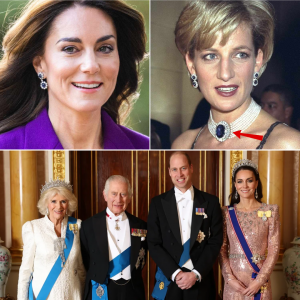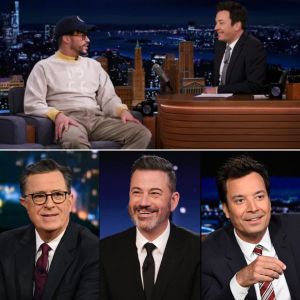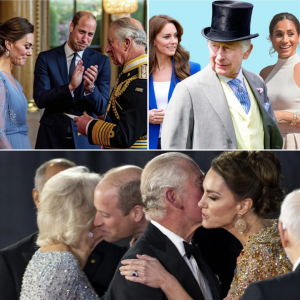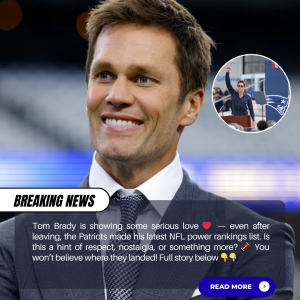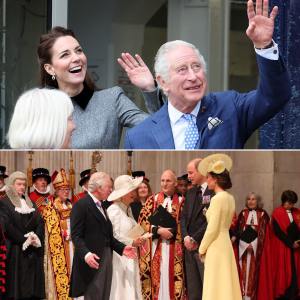
“You Have Four Months to Learn”: How Bad Bunny’s Super Bowl Challenge Became America’s Cultural Flashpoint
In a single, sly sentence on the Saturday Night Live stage, Bad Bunny lit a fire that’s now burning across America. Dressed in crisp white, his presence radiating confidence and pride, the Puerto Rican superstar didn’t just tease his upcoming Super Bowl halftime show — he declared a cultural moment. “If you didn’t understand what I just said,” he grinned at the live audience, “you have four months to learn.”
The crowd erupted, laughter and applause intermingling with a sense of electricity. But beyond Studio 8H, his words echoed like a thunderclap, detonating across social media, talk radio, and political circles. To millions, it was pure brilliance — a moment of pride for the global Latino community, a reminder that America’s melting pot still has fire left in it. To others, it was a taunt, a challenge thrown at the feet of traditionalists: “Catch up, or get out of the way.”
The Super Bowl hasn’t even happened yet, and already, it’s a battleground.
The Backlash That Refuses to Fade
Ever since the NFL confirmed Bad Bunny as the headliner for the 2026 Super Bowl halftime show, controversy has trailed every announcement. The league’s decision to make it the first Spanish-only halftime performance sent shockwaves through both sports and entertainment. Fans of Bad Bunny celebrated it as overdue recognition for Latin music’s global dominance. Critics, however, saw it as cultural overreach.
Among the most vocal opponents were conservative commentators and even political figures like Homeland Security Secretary Kristi Noem, who blasted the NFL for “abandoning the values that made the Super Bowl a symbol of American unity.”
“The NFL may think it’s putting on a show,” Noem said last week, “but after this decision, they won’t be able to sleep at night.”
Her words were dramatic — but so was Bad Bunny’s response. Instead of ignoring the criticism, he mocked it. In flawless Spanish, he thanked fans worldwide, paid homage to Latino pioneers who paved the way, and then delivered the line that electrified his supporters:
“Y si no entendiste lo que acabo de decir… tienes cuatro meses para aprender.”
(“If you didn’t understand what I just said, you have four months to learn.”)
It wasn’t just a statement. It was a challenge.
The Power of Language
To grasp the weight of that moment, you have to understand what Bad Bunny represents — not just as a musician, but as a movement. In less than a decade, he’s become one of the world’s most influential artists, all while refusing to conform to American entertainment norms. He doesn’t translate his lyrics. He doesn’t compromise his language. And he doesn’t apologize for his identity.
By choosing to perform the biggest entertainment event in America entirely in Spanish, Bad Bunny is doing something no artist before him has dared. It’s not just about music — it’s about identity, representation, and the shifting definition of what “American” culture means in 2026.
“For years, Spanish-speaking artists were told they needed to switch to English to ‘make it big,’” said media critic Ana López in an interview with NPR. “Bad Bunny flipped that rule upside down. He’s telling America: you don’t need to translate yourself for us — maybe we should start understanding you.”
The Right-Wing Reaction
But not everyone sees it as a cultural milestone. Conservative outlets from Fox News to The Daily Wire wasted no time framing his comment as arrogance.
“Bad Bunny just told half the country to learn his language,” one headline read. “Imagine the outrage if it were reversed.”
Commentator Dan Bongino called it “a middle finger to the audience that made the Super Bowl what it is,” while talk radio host Glenn Beck accused the NFL of “turning patriotism into pandering.”
Even fans who love football but don’t follow Latin music expressed frustration.
“I have no problem with Bad Bunny,” one fan wrote on X. “But the Super Bowl halftime show should be for everyone. I don’t want to sit there feeling like I need subtitles to enjoy it.”
Others pointed out that English is the language of the NFL’s audience — and that a Spanish-only performance could alienate tens of millions of American viewers.
The Counterargument: America Has Changed
But to supporters of Bad Bunny, his comment wasn’t arrogance — it was empowerment. Latinos make up nearly 20 percent of the U.S. population and an even larger share of NFL viewership in cities like Miami, Los Angeles, and Dallas. Spanish isn’t foreign in America anymore; it’s part of its heartbeat.
“Bad Bunny isn’t dividing America — he’s reflecting it,” said Univision host Jorge Ramos. “He’s saying what millions of immigrants feel: that our culture, our language, and our identity are just as American as anyone else’s.”
And the numbers back it up. In 2025, Bad Bunny became the first artist to hold the top three spots on Spotify’s global charts simultaneously — all with songs sung entirely in Spanish. His tours sell out stadiums in minutes. His music videos pull billions of views. For the NFL, booking him wasn’t just diversity — it was good business.
“This isn’t a risk,” said marketing analyst David Reynolds. “It’s a reflection of where the world is going. The NFL is thinking globally, not just locally.”
The NFL’s Tightrope
Behind the scenes, league insiders admit there’s concern. The Super Bowl halftime show is both a cultural spectacle and a business powerhouse — a production that costs tens of millions but generates hundreds of millions in global brand exposure. Every year, the league must walk the fine line between creative innovation and cultural controversy.
“Bad Bunny was a bold choice,” one NFL executive said anonymously. “He’s a global superstar, but we knew he’d stir debate. What we didn’t expect was a government official weighing in.”
Still, the league is standing firm. In a brief statement, it said the Super Bowl “reflects the global diversity of the fans who love football.” Translation: Bad Bunny isn’t going anywhere.
A Historical Moment for Representation
For Latino artists and fans, Bad Bunny’s halftime show is more than entertainment — it’s vindication. It’s a sign that decades of underrepresentation are finally being acknowledged on the world’s biggest stage.
“This isn’t just about a song,” said artist and activist Julissa Prado. “It’s about generations of Latinos who were told to hide their accent, to change their names, to fit in. Now the biggest event in America is saying, you belong here too.”
In cities across Latin America, the announcement has been celebrated like a national holiday. From San Juan to Mexico City, fans have been sharing clips of Bad Bunny’s SNL monologue with pride.
“He didn’t just speak for Puerto Ricans,” one fan wrote on Instagram. “He spoke for all of us.”
The “Learn Spanish” Moment
Still, it’s his final line — “you have four months to learn” — that continues to dominate the headlines. Depending on who you ask, it was either a playful jab or a pointed provocation.
“He knew exactly what he was doing,” said media analyst Kristina Mendoza. “He was flipping the power dynamic. For once, it wasn’t the immigrant or the outsider who had to assimilate. It was America that had to keep up.”
That shift — subtle yet seismic — is what makes the controversy so potent. For decades, the unspoken rule of American pop culture has been assimilation. Bad Bunny is rejecting that rule outright.
The Stakes for the NFL
If the league gets this right, the 2026 Super Bowl could go down as one of the most iconic halftime shows in history — a global celebration of unity through diversity. If it goes wrong, it could deepen the perception that the NFL has lost touch with its traditional fan base.
It’s a high-wire act, and both sides know it.
“The NFL doesn’t just sell football,” said culture critic David Greene. “It sells America’s image of itself. And right now, that image is changing faster than the league can control.”
Even advertisers — who pay millions for a single Super Bowl commercial — are reportedly watching closely.
“If the halftime show becomes too polarizing,” said an executive from one top brand, “it could turn what’s supposed to be the most unifying night of the year into a political battlefield.”
Bad Bunny’s Silence Speaks Volumes
As the uproar grows, Bad Bunny has said little beyond his initial SNL remarks. But those close to him describe his approach as intentional.
“He doesn’t respond to outrage,” said one insider. “He creates it — and then lets the art speak.”
Indeed, his career has been built on contradiction: masculine yet androgynous, rebellious yet grounded, playful yet profound. His message has always been the same — authenticity is non-negotiable.
“If you want to understand Bad Bunny,” wrote one Rolling Stone columnist, “don’t translate his lyrics. Translate his impact.”
The Broader Meaning
The fight over Bad Bunny’s halftime show isn’t just about language or politics. It’s about identity. It’s about who gets to define what America looks and sounds like. And in that sense, it’s not so different from every other cultural clash that has come before — Elvis shaking his hips, Madonna kissing Britney Spears, Beyoncé raising her fist.
Each generation has its line in the sand. Bad Bunny just drew his — in Spanish.
The Final Word
As the countdown to the Super Bowl begins, the controversy shows no signs of slowing. Kristi Noem’s warnings echo on conservative airwaves. Late-night comedians mock her outrage. Spanish lessons are trending on Duolingo. And through it all, Bad Bunny remains silent — calm, composed, and entirely in control of the storm he created.
The stage is set. The world is watching. And the message couldn’t be clearer: the language of America’s future may not always be English.
Whether you love it or loathe it, Bad Bunny’s challenge still stands — four months, and counting.
